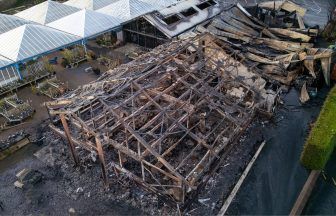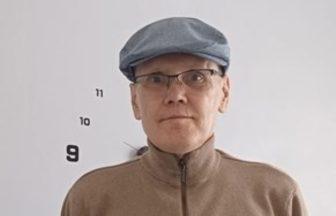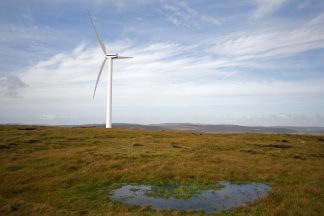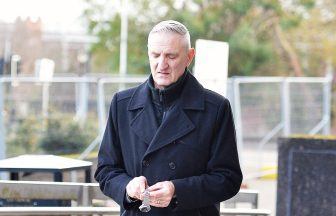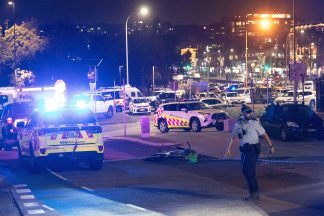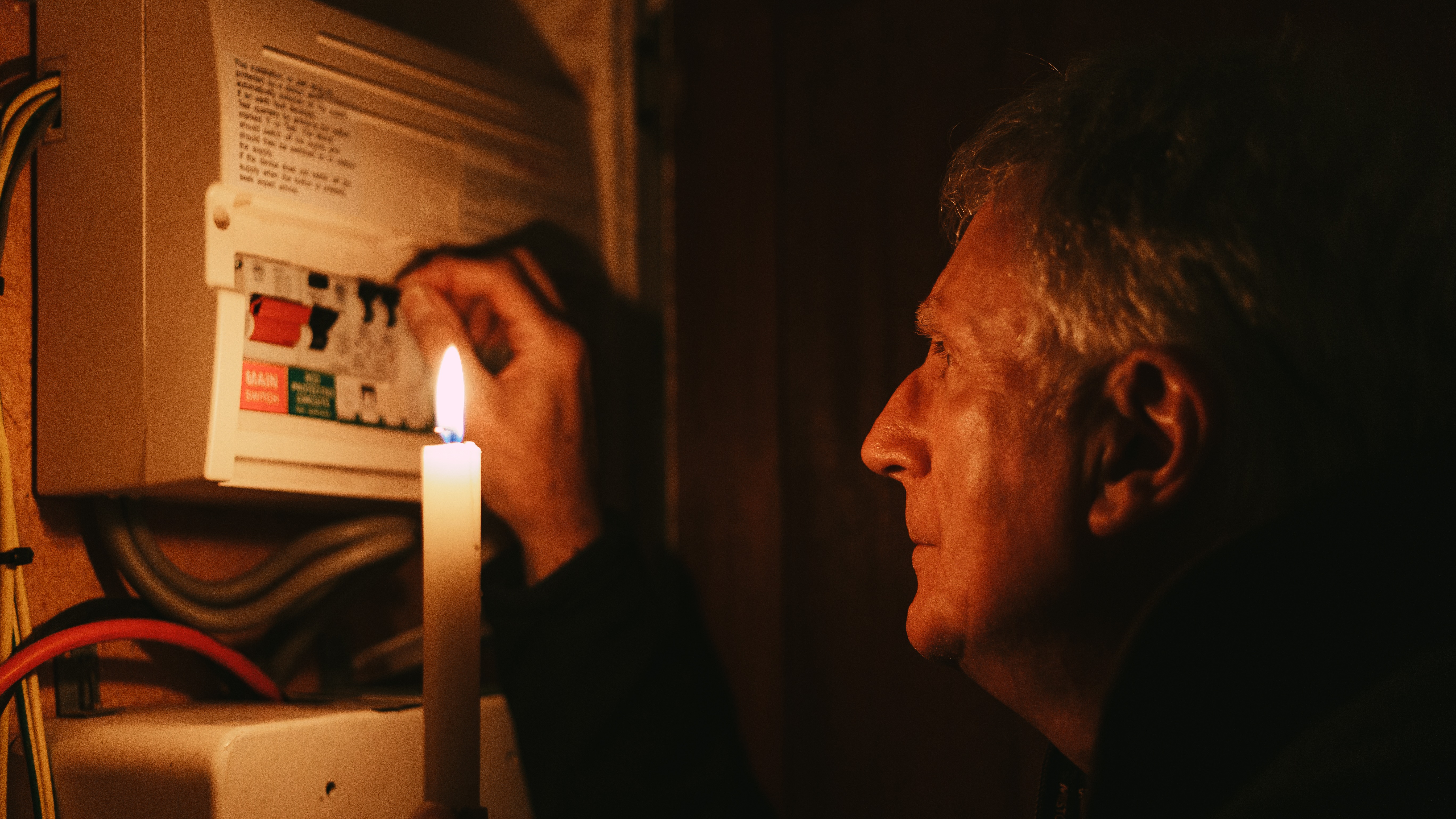More than 1,300 people have died and a second 7.5 magnitude earthquake has hit central Turkey.
It comes after a powerful 7.8 magnitude earthquake rocked south-eastern Turkey and northern Syria.
Hundreds of people are still believed to be trapped under rubble, and the death toll is expected to rise as rescue workers searched the wreckage in cities and towns across the region.
On both sides of the border, residents jolted out of sleep by the pre-dawn quake rushed outside on a cold winter night, as buildings were flattened and strong aftershocks continued.
Rescue workers and residents in multiple cities searched for survivors, working through tangles of metal and giant piles of concrete. A hospital in Turkey also collapsed and patients, including newborn babies, were evacuated from a handful of facilities in Syria.
In the Turkish city of Adana, one resident said three buildings near his home had collapsed.
Farther east in Diyarbakir, cranes and rescue teams rushed people on stretchers out of a mountain of pancaked concrete floors that was once an apartment building.
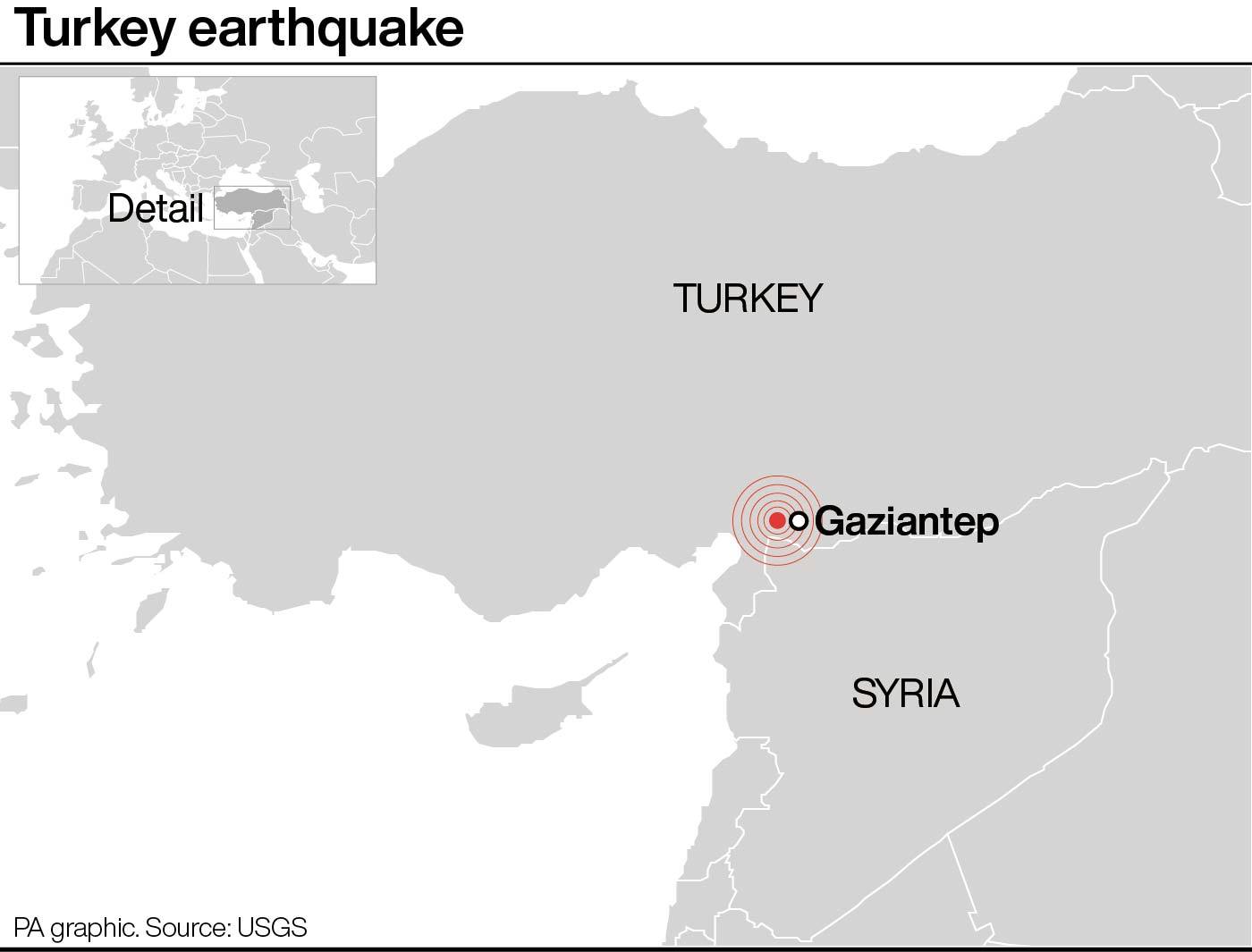 PA Media
PA MediaThe quake, felt as far away as Cairo, was centred north of Gaziantep, a Turkish provincial capital.
It struck a region that has been shaped on both sides of the border by more than a decade of civil war in Syria.
On the Syrian side, the area affected is divided between government-held territory and the country’s last opposition-held enclave, which is surrounded by Russian-backed government forces. Turkey, meanwhile, is home to millions of refugees from that conflict.
The opposition-held regions in Syria are packed with some four million people displaced from other parts of the country by the fighting. Many of them live in buildings that are already wrecked from past bombardments.
Hundreds of families remained trapped in rubble, according to the opposition emergency organisation, called the White Helmets.
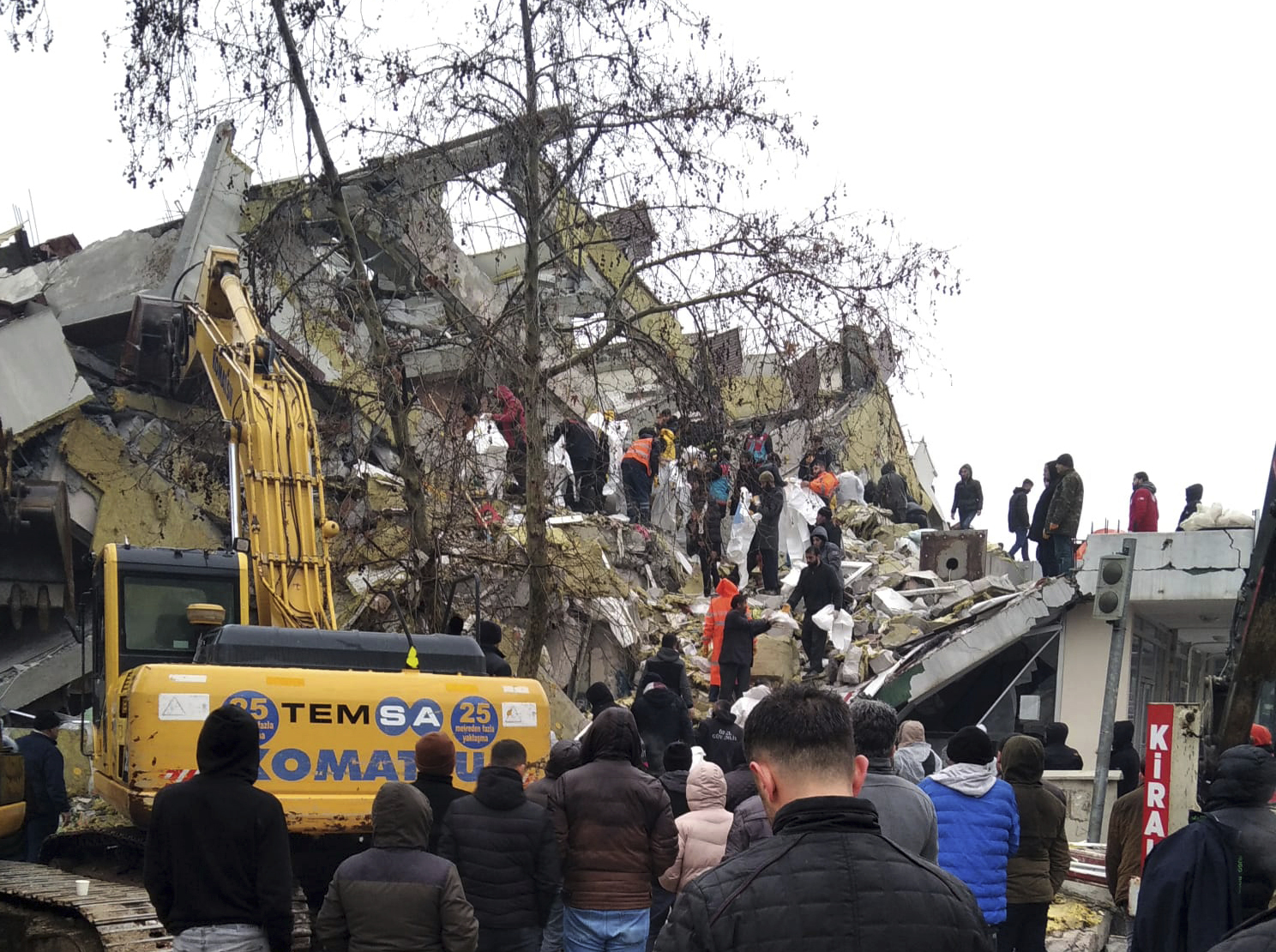 PA Media
PA MediaStrained health facilities and hospitals were quickly filled with wounded, rescue workers said. Others had to be emptied, including a maternity hospital, according to the SAMS medical organisation.
“We fear that the deaths are in the hundreds,” Dr Muheeb Qaddour said by phone from the town of Atmeh.
Turkey sits on top of major fault lines and is frequently shaken by earthquakes. Some 18,000 were killed in powerful earthquakes that hit northwest Turkey in 1999. The US Geological Survey measured Monday’s quake at 7.8.
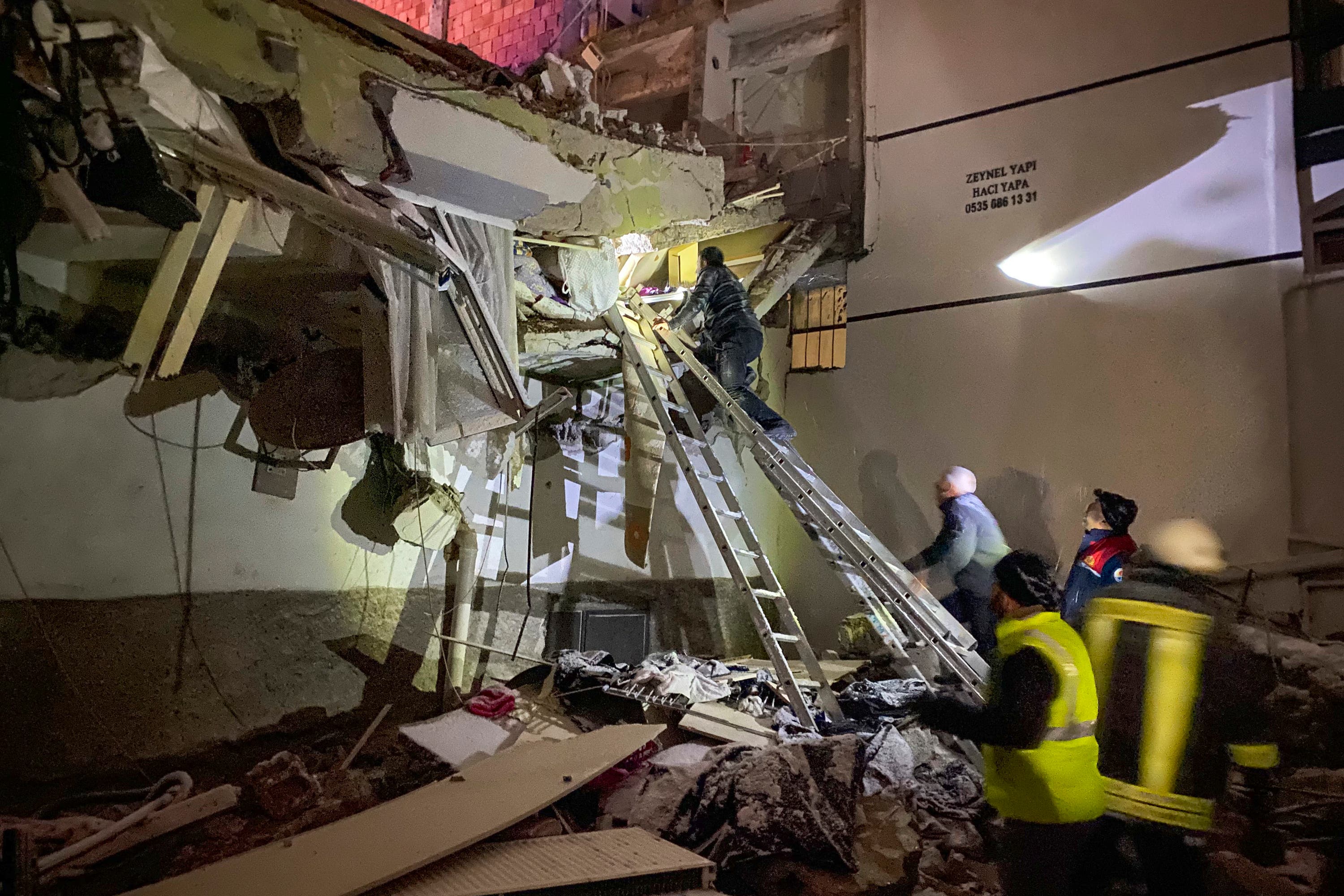 PA Media
PA MediaAt least 20 aftershocks followed, some hours later during daylight, the strongest measuring 6.6, Turkish authorities said.
Buildings were reported collapsed in a wide area extending from Syria’s cities of Aleppo and Hama to Turkey’s Diyarbakir, more than 200 miles to the north-east. Nearly 900 buildings were destroyed in Turkey’s Gaziantep and Kahramanmaras provinces, said vice president Fuat Oktay.
A hospital collapsed in the Mediterranean coastal city of Iskanderoun, but casualties were not immediately known, he said.
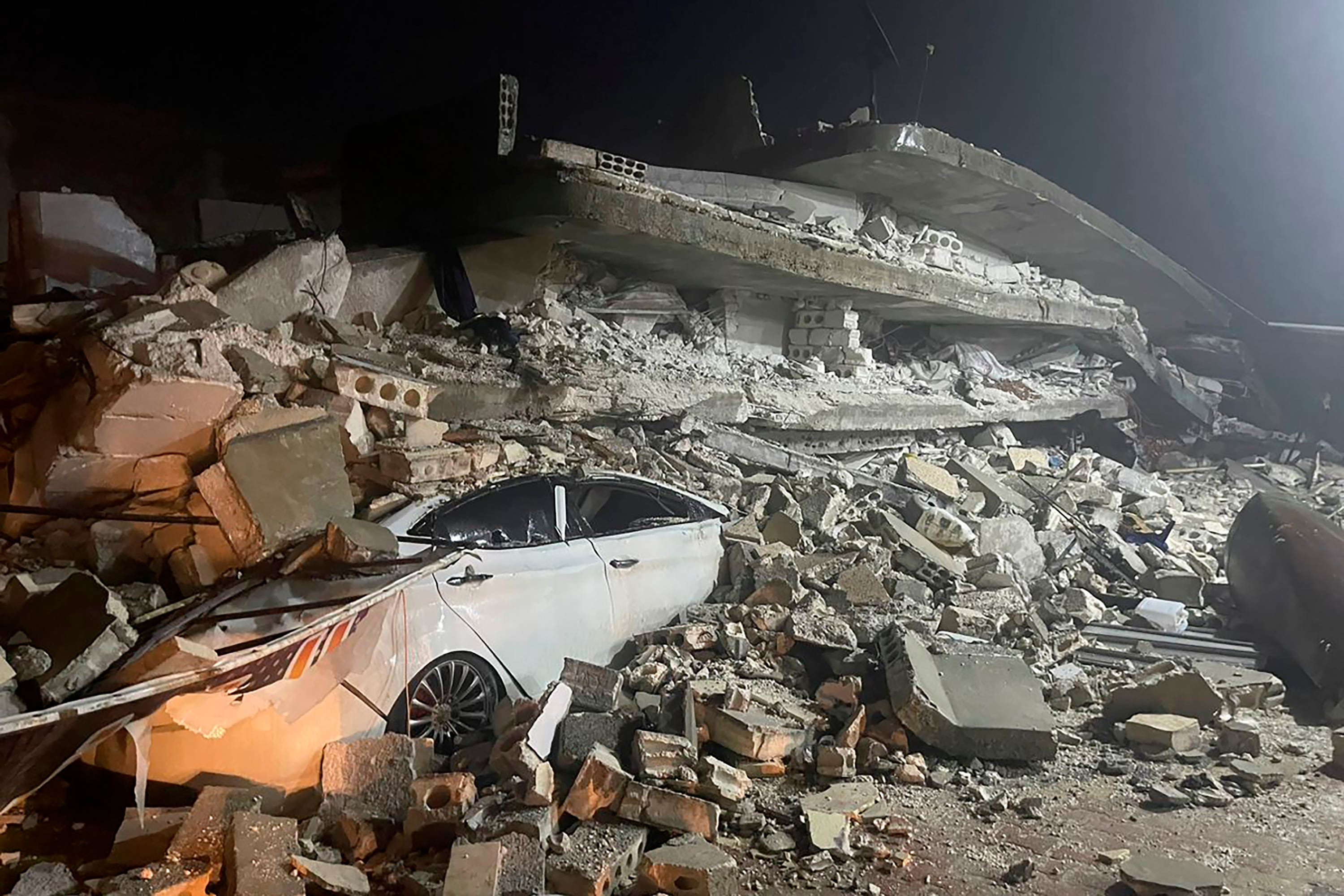 PA Media
PA Media“Unfortunately, at the same time, we are also struggling with extremely severe weather conditions,” Mr Oktay told reporters.
Nearly 2,800 search and rescue teams have been deployed in the disaster-stricken areas, he said.
“We hope that we will get through this disaster together as soon as possible and with the least damage,” Turkish President Recep Tayyip Erdogan wrote on Twitter.
Countries from Taiwan to Russia to Germany offered to send help, whether medical supplies, search teams or money.
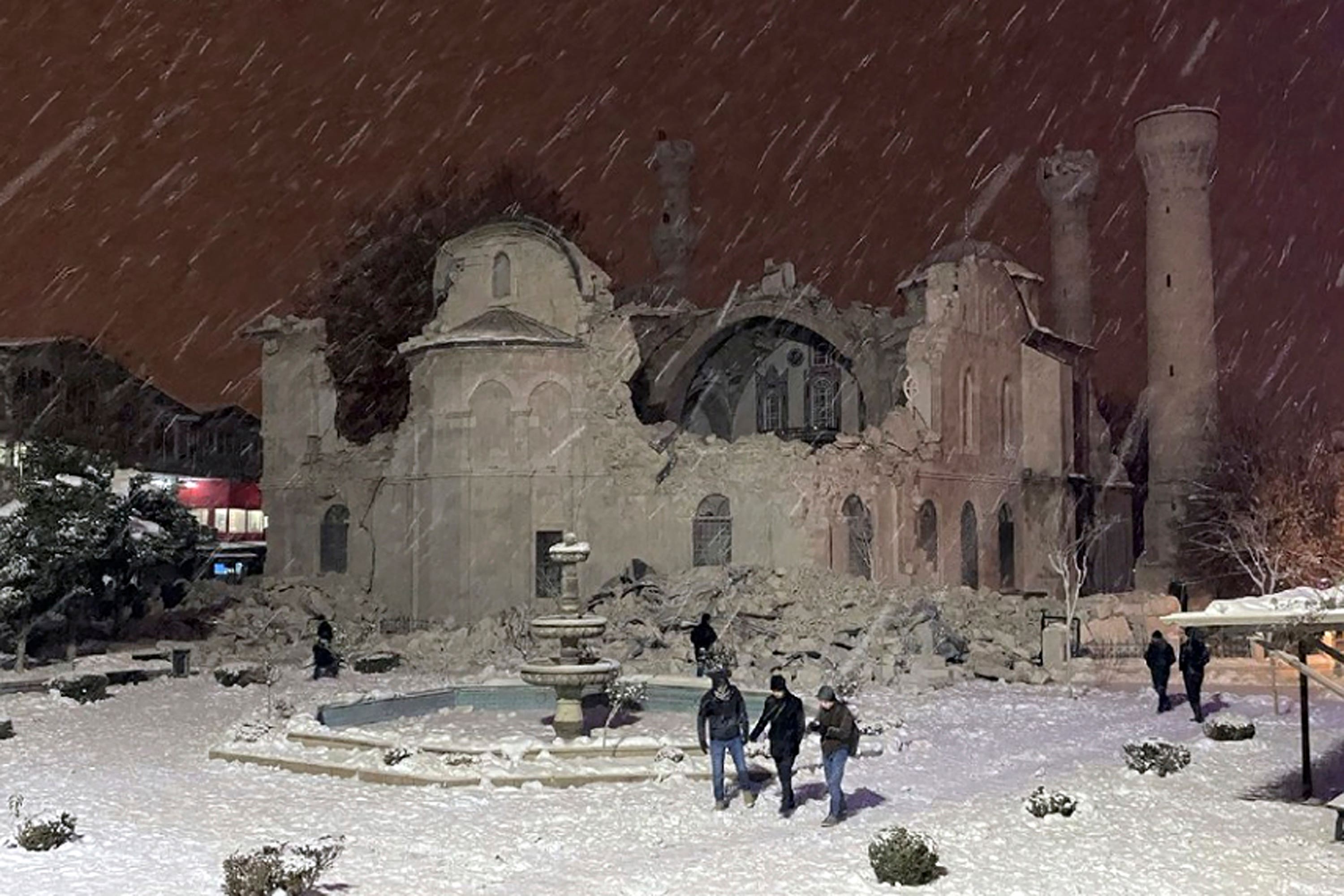 PA Media
PA MediaIn Turkey, people trying to leave the quake-stricken regions caused traffic jams, hampering efforts of emergency teams trying to reach the affected areas. Authorities urged residents not to take to the roads. Mosques around the region were being opened up as a shelter for people unable to return to damaged homes amid temperatures that hovered around freezing.
The quake heavily damaged Gaziantep’s most famed landmark, its historic castle perched atop a hill in the centre of the city. Parts of the fortresses’ walls and watch towers were levelled and other parts heavily damaged, images from the city showed.
In Diyarbakir, hundreds of rescue workers and civilians formed lines across a mountain of wreckage, passing down broken concrete pieces, household belongings and other debris as they searched for trapped survivors while excavators dug through the rubble below.
In north-west Syria, the quake added new woes to the opposition-held enclave centred on the province of Idlib, which has been under siege for years, with frequent Russian and government air strikes.
The territory depends on a flow of aid from nearby Turkey for everything from food to medical supplies.
The opposition’s Syrian Civil Defence described the situation there as “disastrous,” adding that entire buildings have collapsed and people are trapped under the rubble.
In the small Syrian rebel-held town of Azmarin in the mountains by the Turkish border, the bodies of several dead children, wrapped in blankets, were brought to a hospital.
The USGS said the quake was centred about 20 miles from Gaziantep, 11 miles deep.
At least 912 people were killed in 10 Turkish provinces, with more than 5,400 injured, according to Turkey’s president.
The death toll in government-held areas of Syria climbed to 326 people, with some 1,000 injured, according to the health ministry.
In rebel-held areas, at least 150 people were killed, according to the White Helmets, though the SAMS medical organisation put the toll at 106. Both said hundreds were hurt.
Follow STV News on WhatsApp
Scan the QR code on your mobile device for all the latest news from around the country


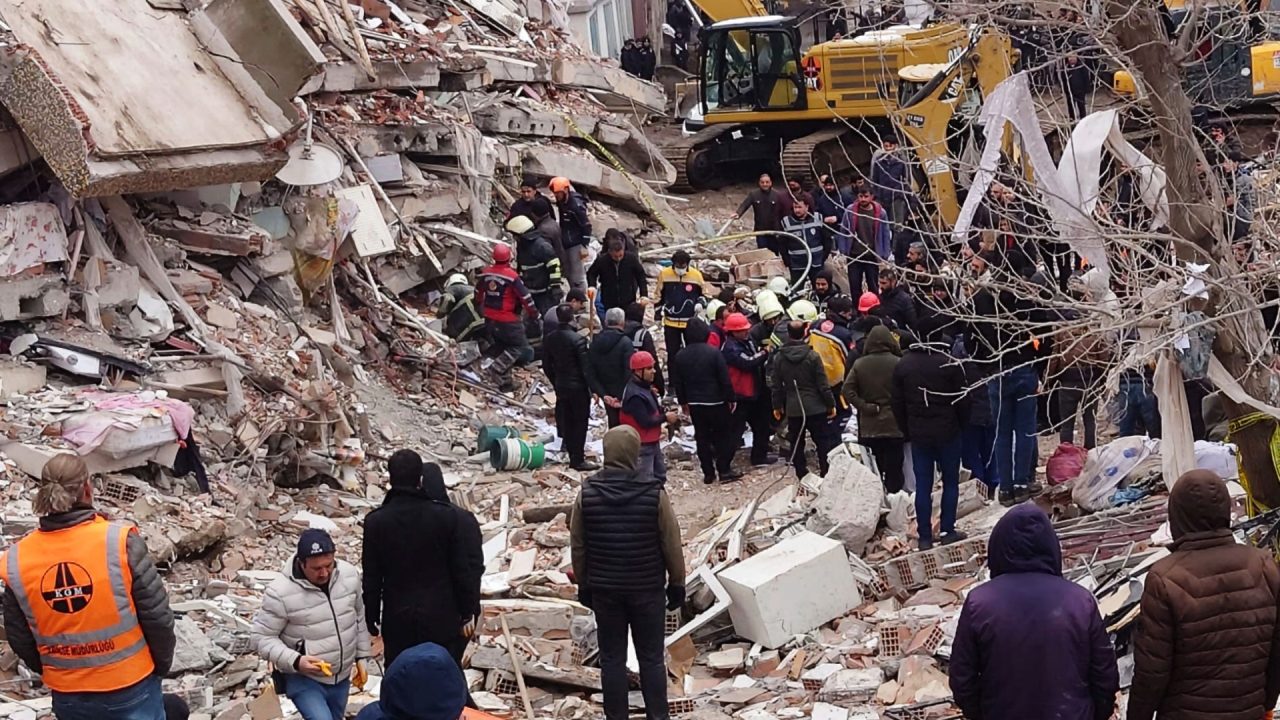 PA Media
PA Media

